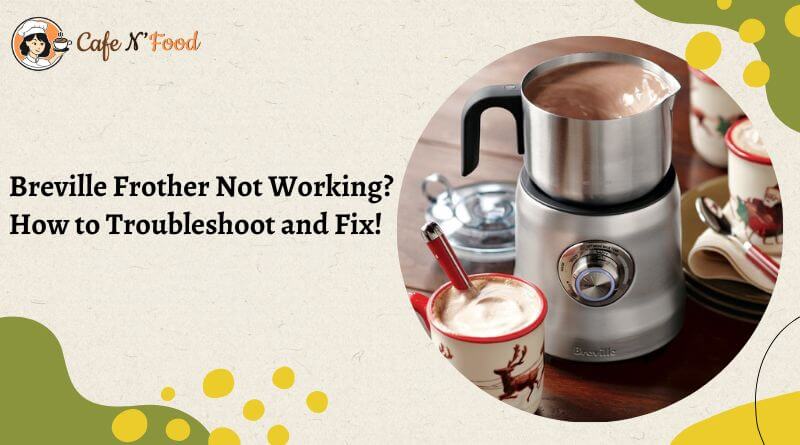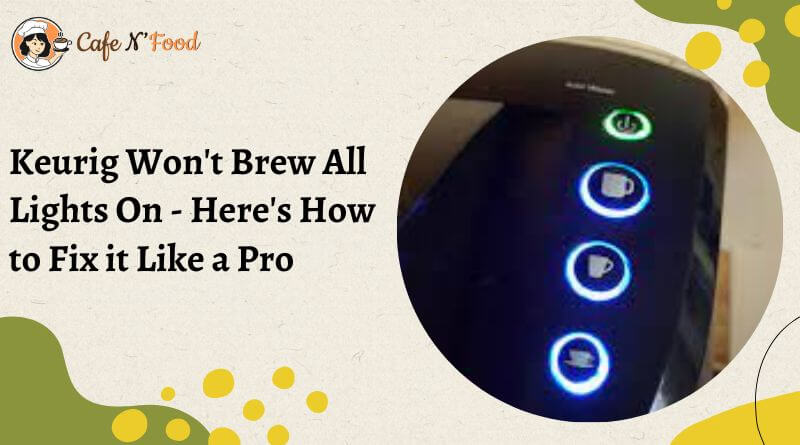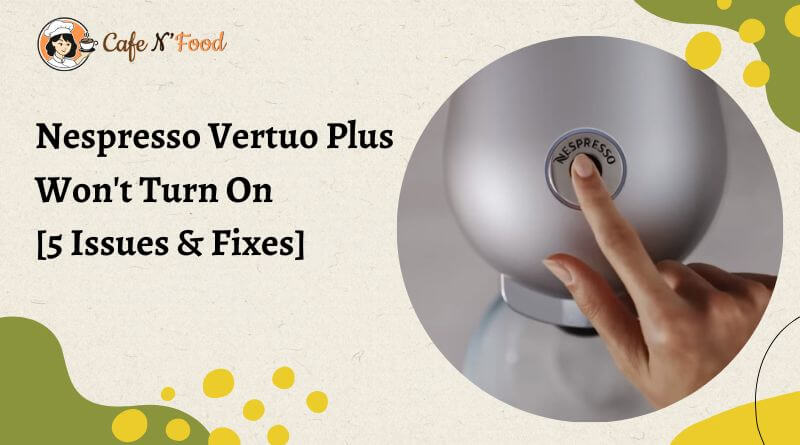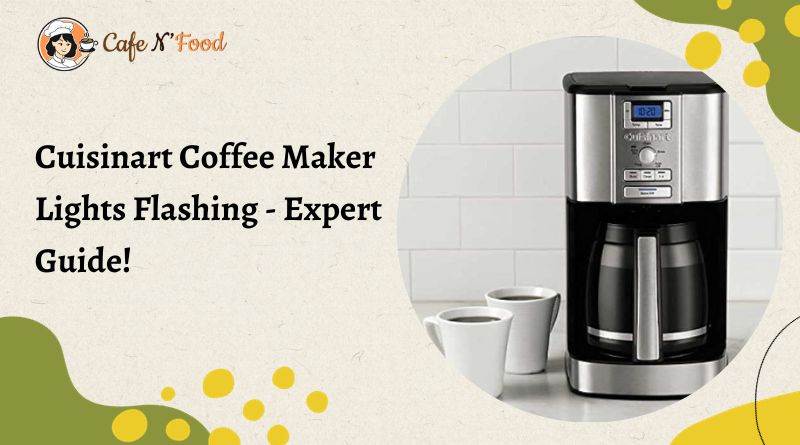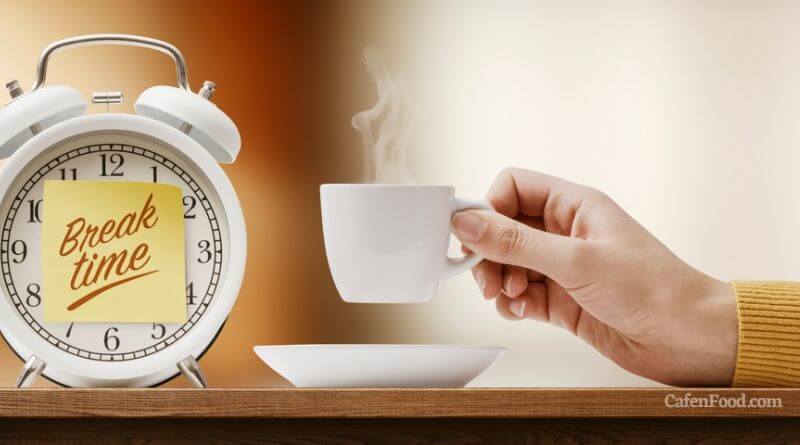Is your pressure gauge not working correctly, and you are least up with what to do?
Nothing turns out to be more relaxing than enjoying a delightful shot of espresso or latte after the hectic grind of life. And in such a situation, what can be more heartbreaking than learning that your brewer is out of the blink?
There could be multiple reasons why your Breville pressure gauge is not working. The two common reasons are that either your pressure gauge is broken or it is not reaching the optimal pressure. You can also check out other problems, like a clogged pump and an unclean grinder.
Want to know the exact culprit that stepped between you and your delicious cup of joe? Then thank the stars, as the article covers all the related stuff. Now, without any further ado, let’s dive into the details!
Why is my Breville pressure gauge not working? Some Possible Reasons!
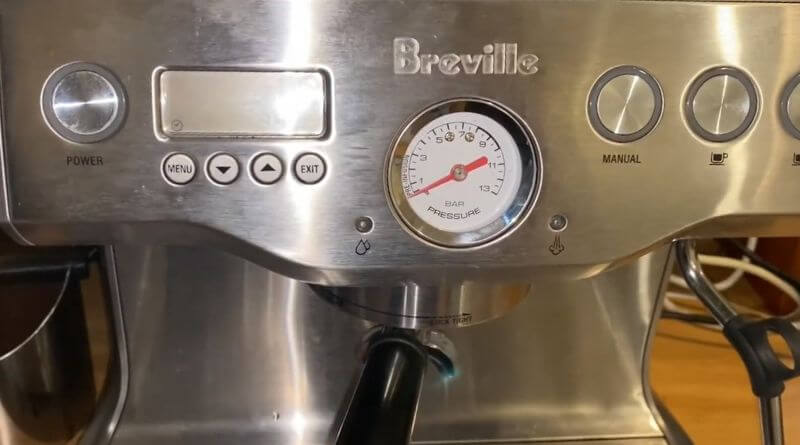
If your Breville pressure gauge is not reaching the required pressure, there could be multiple culprits playing the role of the black foe at the back end. It mostly happens due to the presence of a broken or malfunctioned part.
So, let’s blow by blow, move through them, and find how they contribute to making your espresso non-functional.
01. Broken Pressure Gauge:
The first thing to check out is if your pressure gauge is even working or not. Whether there are some pressure issues or the gauge has simply worn out.
So, take your coffee brewer to an authorized technician, and let him check.
If you are lucky enough to know that your gauge is not broken, move on to the next reason.
02. Seal and Gasket:
Just like a pressure cooker, there is a gasket made of rubber in Breville coffee makers too. The gasket ensures a tight seal between the bottom and top of the machine. In this way, it provides an airtight environment, allowing the normal functioning of the brewer.
However, with time, the gasket rubber degrades due to fats, oil, and limescale buildup. As a result, the pressure isn’t maintained, leading to the malfunctioned pressure gauge.
Apart from that, the material also starts to leak from the bottom.
03. Water Line Issue:
Whenever we buy or take our coffee brewer to a repair shop, they recommend using filtered water instead of tap water. Ever noticed WHY?
Related Informational Guides: How to fold chemex filter square
It’s because of the calcium and magnesium oxides present in the tap water, making it a type of hard water. This hard water, full of minerals, has the potency to clump inside the waterline, making it clog. As a result, low pressure will be built up, and less coffee will come out.
However, no such clogging occurs if we use filtered water, free of such lime and magnesium compounds.
04. Pressure Regulator:
Another possibility is that your pressure regulator is improperly functioning. It leads to fluctuating pressure and, thus, poorly brewed coffee.
05. Too much coffee added:
Lastly, if you add excessive coffee grounds to the machine, the stated problem can still prevail. Try grinding less coffee at one time.
How to test the pressure on the Breville barista express? 4 Easy Steps to follow!
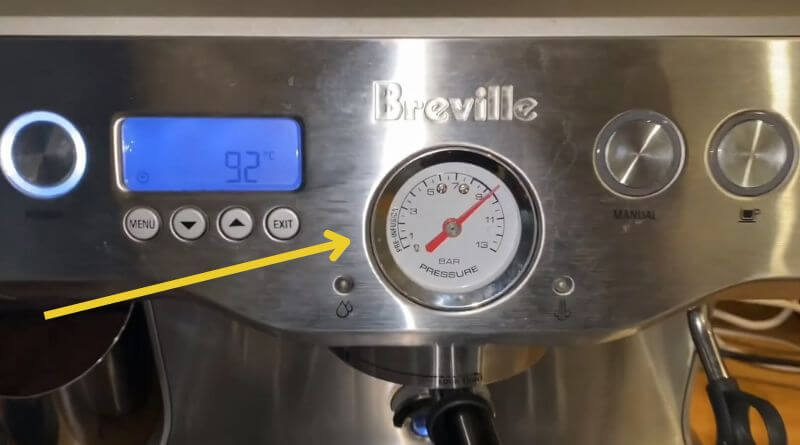
If you are looking for an easy-to-follow way of testing pressure levels, here is an easy way to assist you.
- Take the clean rubber cleaning disk out and place it in the portafilter to provide an airtight environment.
- Fill the basket or tank with water. However, don’t add coffee beans to it. We are only here to check the pressure of our Breville pressure gauge.
- Select the number of cups button.
- While the machine is brewing, look at the pressure gauge, and note its readings.
- If the pressure gauge needle indicates a reading of 8, 9, or 10 bars, the pressure gauge is functioning properly, and you will get the perfectly extracted shot in 30 seconds.
In general, 8 to 10 bars of pressure are considered the ideal conditions for brewing a yummy cup of coffee with proper extraction in the proper time of 30 seconds.
Low pressure leads to longer and slowed extraction, while high pressure gives an improperly extracted coffee in less time.
How to increase the pressure on the Breville barista express? Five easy fixes!
If your Breville pressure gauge maintains a pressure lower than 8 bars, here are some easy yet effective solutions to try out.
- If your pressure gauge is broken or the needle is not moving, you can take the machine to an authorized technician or Breville outlet and replace it.
- However, if only the seal or gasket is at fault, you can replace the old, worn-out seal with a new one. It will not cost you much and will provide an easy solution too.
- Another solution that solves nearly all problems, from rancid smell to clogged lines, is a thorough cleaning of your Breville brewer. It will remove all the buildup of limescale, minerals, oxides, and jammed oil.
- Add the required amount of coffee beans. A high or low amount results in pressure issues.
- Tamping the coffee removes the air pockets between the coffee grounds, helping to reduce pressure fluctuations. So, tamp and distribute the coffee grounds properly.
How to prevent a Breville barista from reaching high pressure?
Another problem often faced during brewing the Breville machine is that high pressure is reached, and being a coffee snob, you would be well up with the fact that faster-brewed coffee is not a great thing.
Just because your machine whipped a shot of latte in 10 seconds doesn’t mean it works with high efficiency or is good. Instead, this shows there is some error at the back end, which is causing high pressure.
So, here are some tips to prevent high-pressure issues.
- Always use ultra-fine, coarse grounds of coffee.
- Reduce the number of coffee grounds
- Tamp the grounds to remove air pockets. However, don’t compress the coffee too much so that water flow becomes restricted.
What to do if the Breville pressure gauge doesn’t reach pressure? One last solution
So, if you have tried all the above steps, and yet the pressure gauge needle is not moving properly or the pressure isn’t sitting right, it means the pressure gauge is worn out and needs replacement.
Use a screwdriver, and loosen the nuts. Open the Breville coffee machine, and replace it with a new one.
However, if you are tight on budget, you can also get it repaired or fixed by an expert technician.
Breville Amazon Products
Now that we have discussed adjusting the pressure of a Breville coffee machine, I would like to enlist the top three Breville brewers one should buy from.
My RECOMMENDATION
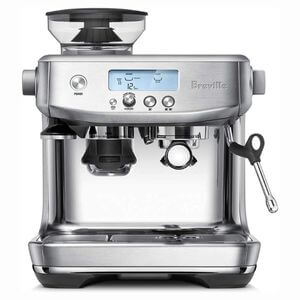
Breville Barista Pro Espresso Machine
The stated model was introduced in 2019 and is one of the best Breville coffee makers, with lots of bells and whistles. It comes with a conceal burr grinder for dose control and steam want to control the pressure. And you know what the most dominant perk is? It is easy to use and comes with an LED interface and PID temperature control.
MY SECOND CHOICE
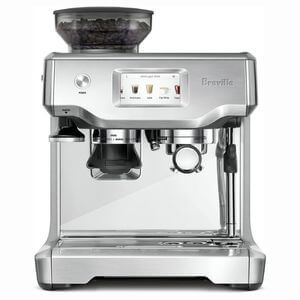
Breville Barista Touch Espresso Machine
The given Breville barista is both affordable and easiest to use, providing you with cafe style latte by doing almost nothing. All you need to do is to select one of the five flavors it displays and insert the ingredients. Leave the rest on the espresso.
The best part is its ThermoJet System, which provides the perfect extraction temperature in just 3 to 4 seconds.
BEST DEAL
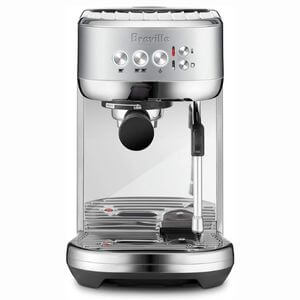
Breville Bambino Plus Espresso Machine
It is one of the best models that offer high-end features at half of the price. It comes with volumetric dosing and infusion time. All you need to do is to set the required volume according to your dose and let the brewer do its part.
Want to do milk frothing by yourself? Then cheer up as the Bambino Plus allows you to do one by switching to manual infusion.
Frequently Asked Questions (FAQs):
What are the key components of the Breville barista machine?
The major components of the Breville brewer are the water source, pump, boiler, steam wand, and portafilter.
Why is my Breville machine under extracting?
There could be multiple reasons that could lead to under-extraction, the most common being high pressure due to the presence of more than required coffee. As a result, you get an under-extracted coffee that feels watery in touch and salty in flavor.
How many bars are there in the Breville machine?
The pressure gauge has readings from 0 to 15 bars. In this, the optimal pressure is for the needle to be somewhere between 8 to 10 bars. Anything above or below yields a bad-tasting coffee.
How long do Breville filters last?
The Breville filters particularly last for 80 to 90 days. In short, they can easily filter 10.6 gallons of coffee before falling in need of replacement.
How often should you clean the Breville machine?
A rule of thumb is to wash your Breville machine once a week. However, if you use the machine more frequently, you can wash it after a few days to avoid the unpleasant, stinky smell.
Conclusion
All in all, Breville brewer is one the best coffee makers to buy, and it takes your coffee game to a whole new world.
However, to enjoy the soul-satisfying joe, you need to do proper maintenance of the machine.
If your pressure gauge is out of order, check its gasket and needle to find the area at fault, or take the brewer to an expert.
